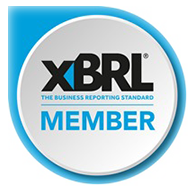It is a fact that regulators like Central Banks and Stock Exchange supervisors are rapidly implementing XBRL all over the world. In the surface, this is just changing the format of a document and it would not be so important if only a small number of regulators were doing the same. The importance of this movement comes once companies realize that there is a standard for exchanging reports and that is is the same standard all over the world. This is, in fact, reducing the cost of being global.
XBRL is the standard selected by regulators for several reasons: It allows them to precisely define the concepts that the companies must use in their reports the concepts can be enriched with labels in several languages and references to literature or laws. The relationships between the concepts can also be documented in the so called XBRL Taxonomy.
The Taxonomy is a plain XML file. In fact, there is nothing in XBRL that is not XML. The XBRL Technology is simply a standardized way to use XML for modeling the content of business reports. Why not plain XML? the simple answer is that plain XML is too flexible and this is against the possibility to create high level end user tools. Thanks to XBRL some of the common things that every project has to implement are already implemented.
Now that XBRL has to be used to report to the regulators, the private companies can also take advantage of it. XBRL can be used to implement the processes of obtaining information for consolidation. XBRL is especially indicated when in the company there are several heterogeneous ERP systems.
Reporting Standard and his business partners can help your company in three areas in relation to the use of the XBRL standard:
First: to automate the process of generating information to the regulators. In this kind of projects me use a three steps methodology:
- Training about XBRL
- Development of a template for the XBRL Report •Set up and configuration of Reporting Standard ETL components to fully automate the process
This methodology guarantee the success of the project and also reduce the project cost to the minimum. The ETL platform, once configured, can be used each time a report needs to be generated.
By using the same validation components that the regulators uses at the time they receive the reports the companies can better handle the “Reputational Risks” of submitting incorrect reports.
Second area of collaboration is the company as a consumer of XBRL reports. Once that there is information in the XBRL format available, and due to the fact that regulators are publishing the XBRL reports they receive (if they corresponds to public information) then a company can store and analyze all that information internally in XBRL Databases. The information can be used to analyze and compare performance of the company with other companies in the same industry.
The third area is for internal use in the processes of establishing and sending reports to other departments inside the organization. The advantage of using standard can facilitate these processes and provide better documentation in an standardized way so the report builders can concentrate on the data that has to be sent and avoid spending money just on understanding the reporting needs, fixing communication problems or spending money on implementing proprietary communication formats.
By using the XBRL standard there is already software available, methodologies and procedures so the business requirements are the project drivers and not the technology.




